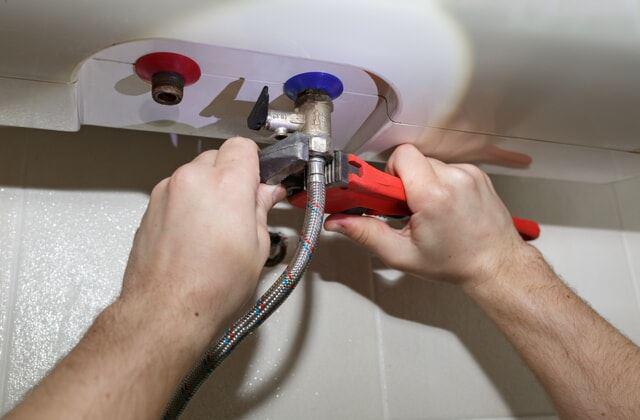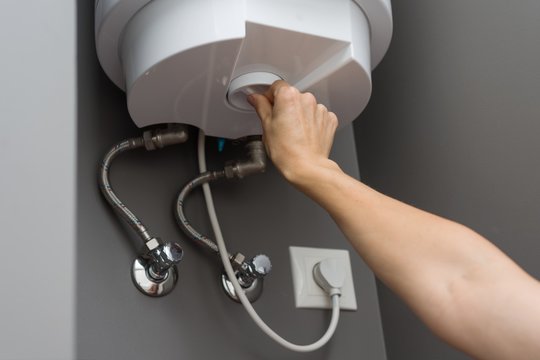Effective Techniques for Caring for Your Home's Hot Water System
Effective Techniques for Caring for Your Home's Hot Water System
Blog Article
Just how do you feel on the subject of What Kind of Maintenance Do Water Heaters Need??

Warm water is necessary for daily convenience, whether it's for a rejuvenating shower or cleaning meals. To guarantee your hot water system runs effectively and lasts much longer, regular upkeep is essential. This write-up offers sensible tips and understandings on just how to maintain your home's warm water system to avoid disturbances and costly repair work.
Intro
Maintaining your home's hot water system may appear complicated, yet with a few basic actions, you can ensure it operates smoothly for several years to come. This guide covers every little thing from understanding your hot water system to DIY upkeep pointers and knowing when to employ professional help.
Significance of Preserving Your Warm Water System
Normal upkeep not only prolongs the life-span of your warm water system but also ensures it operates effectively. Ignoring upkeep can lead to decreased effectiveness, higher energy expenses, and even early failing of the system.
Indicators Your Warm Water System Demands Upkeep
Knowing when your hot water system needs attention can avoid major problems. Watch out for indications such as inconsistent water temperature, unusual sounds from the heating system, or corroded water.
Purging the Hot Water Heater
Flushing your water heater eliminates sediment accumulation, enhancing effectiveness and prolonging its life.
Checking and Replacing Anode Rods
Anode poles protect against deterioration inside the tank. Examining and replacing them when broken is crucial.
Facility Concerns Needing Expert Aid
Instances consist of significant leaks, electrical problems, or if your hot water heater is constantly underperforming.
Routine Specialist Upkeep Perks
Professional maintenance can consist of complete assessments, tune-ups, and making certain conformity with safety standards.
Evaluating and Changing Temperature Setups
Changing the temperature level settings ensures optimum performance and safety.
Do It Yourself Tips for Maintenance
You can execute numerous upkeep tasks on your own to keep your warm water system in top condition.
Looking for Leaks
Routinely inspect pipelines and connections for leakages, as these can result in water damages and higher bills.
Recognizing Your Hot Water System
Prior to diving into upkeep tasks, it's helpful to comprehend the fundamental components of your hot water system. Typically, this consists of the water heater itself, pipelines, anode rods, and temperature controls.
Monthly Upkeep Tasks
Regular regular monthly checks can help capture small problems prior to they intensify.
Testing Stress Alleviation Valves
Evaluating the stress relief valve guarantees it operates properly and prevents extreme stress buildup.
Protecting Pipelines
Insulating warm water pipelines minimizes warmth loss and can save power.
When to Call a Specialist
While DIY upkeep is beneficial, some problems require expert know-how.
Conclusion
Routine upkeep of your home's warm water system is important for effectiveness, longevity, and expense financial savings. By adhering to these tips and understanding when to look for specialist help, you can make sure a trusted supply of hot water without unforeseen interruptions.
How to Maintain an Instant Hot Water Heater
Before tinkering with your hot water heater, make sure that it’s not powered on. You also have to turn off the main circuit breaker and shut off the main gas line to prevent accidents. Also turn off the water valves connected to your unit to prevent water from flowing into and out of the appliance. 2. When you’re done, you have to detach the purge valves’ caps. These look like the letter “T†and are situated on either side of the water valves. Doing so will release any pressure that has accumulated inside the valves while at the same time avoid hot water from shooting out and burning your skin. 3. When the purge valves’ caps are removed, you have to connect your hosing lines to the valves. Your unit should have come with three hoses but if it didn’t, you can purchase these things from any hardware or home repair shops. You can also get them from retail stores that sell water heating systems. Read the user’s manual and follow it to complete this task properly. When the hosing lines are connected, open the purge port’s valves. 4. You should never use harsh chemical cleaners or solutions when cleaning your unit. Make use of white vinegar instead. It should be undiluted and you’ll probably use about 2 gallons. 5. Now flush your water heater. This task should probably take about 40 minutes. We can’t give you specific directions for this because the procedure is carried out depending on the type, model and brand of your heater. With that being said, refer to the user’s manual. 6. When you’re done draining the unit, you have to turn off the purge port valves again. Remove the hosing lines that you earlier installed on each of the water valves. Put the valve caps (purge port) back in their respective places and be very careful so as not to damage the rubber discs that are found inside these caps. 7. Now that everything’s back in place, check your user’s manual again to find out how to reactivate your water heating system. 8. Once it is working, turn one of your hot water faucets on just to let air pass through the heater’s water supply pipes. Leave the tap on until water flows smoothly out of it. https://www.orrplumbing.com/blog/2014/september/how-to-maintain-an-instant-hot-water-heater/

As a serious reader about Tips For Maintaining Your Hot Water Heater, I imagined sharing that piece of content was mandatory. Remember to take the opportunity to share this post if you enjoyed reading it. We cherish reading our article about Water Heater Maintenance Tips You Can't Afford to Forget.
Schedule A Free Estimate Report this page